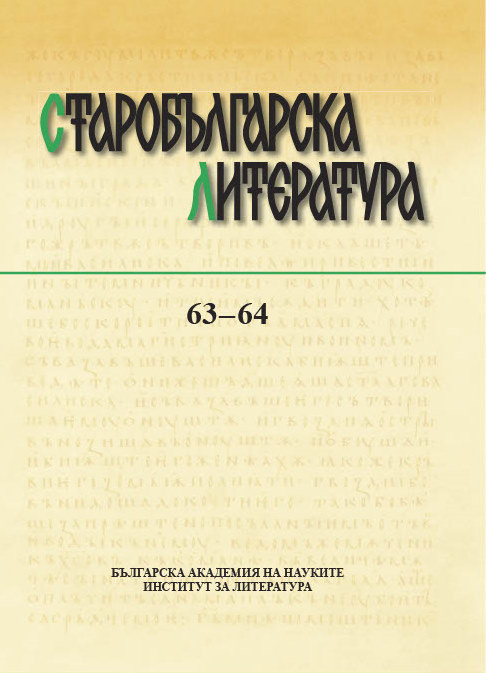Молещият се исихаст в образа на пламък
The Praying Hesychast in the Image of a Flame
Author(s): Evelina MinevaSubject(s): Christian Theology and Religion, History, Language studies, Language and Literature Studies, Cultural history, Studies of Literature, History of ideas, Middle Ages, Theology and Religion, Philology, History of Religion
Published by: Институт за литература - БАН
Keywords: Hesychast; inner prayer; flame
Summary/Abstract: This article examines several unique examples in the Byzantine and Old Bulgarian hagiographical literature of the fourteenth–fifteenth centuries, which reflect the spiritual state of the Hesychast offering the so-called Jesus Prayer or Prayer of the Heart, a new form of the “inner prayer” (νοερὰ προσευχή), originating from the early Christian hermitic practices, which found theological justification in the writings of Evagrius of Pontus (ca. 345–399/400). The reason for searching for its literary reflection is the famous passage from the Encomium in praise of Patriarch Euthymius of Turnovo by Gregory Tsamblak. It describes how Euthymius as a disciple of Theodosius of Turnovo saw his mentor in an unusual and even frightening condition: standing in his full stature, with his hands raised up and his eyes radiating such a strong light, as if it were a flame. This image in Tsamblak is unique in the Old Bulgarian literature of the period and has its parallel only in the Vitaе of the Athonite Hesychast, Maximos of Kapsokalyvia (ca. 1270/1280–ca. 1365/75), three of which were written by his followers and disciples, St Niphon of Kapsokalyvia (1315–1411), Theophanes, Metropolitan of Peritheorio, and Hieromonk Ioannikios Kochylas, and the most recent one by the Byzantine scholar Macarius Macres (1382/1383–7 Jan. 1431). Due to the differences in the specific details and circumstances in their descriptions, it was established that they were not the original source of Tsamblak. Influenced by the second of the three Triads (In Defense of the Holy Hesychasts) by Gregory Palamas, he chose as a model a very similar story about the hermit Arsenius from the alphabetical collection Apophthegmata Patrum (PG 65: 94 C). The fear and astonishment of those who see the flames of the praying recluses, and the fact that the ascetics themselves somehow deny what is seen, can be explained not only by the extremely metaphysical nature of what is happening and ascetic modesty, but also by the notion of an evil spirit sent from the devil, or by the influence of heretical ideas and practices. Especially in the Vitae of the fourteenth–fifteenth centuries the hermit's apparent indifference and even the ban on sharing what was seen was probably dictated by the writers' desire to prevent a reaction of disbelief, as well as the accusation of non-Orthodoxy, as Hesychasts were known to be accused by their opponents as Bogomils and Massalians because of similarities in their ascetic practices with these heretical movements.
Journal: Старобългарска литература
- Issue Year: 2021
- Issue No: 63-64
- Page Range: 242-269
- Page Count: 28
- Language: Greek, Ancient (to 1453), Bulgarian, Old Slavonic, Old Bulgarian
- Content File-PDF

